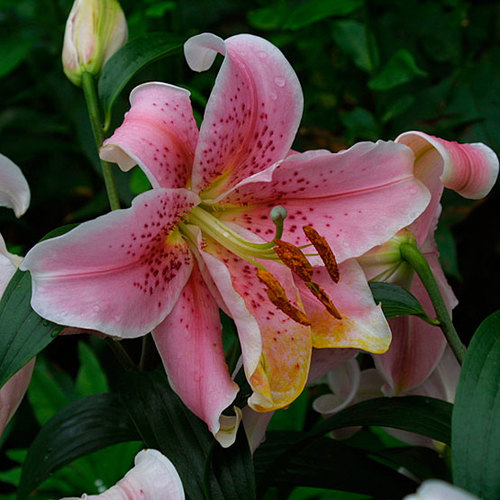
Lilium is a genus of bulbous perennials grown for their very showy, often fragrant flowers. Among the 100 species, there are four main flower shapes: trumpet, bowl, recurved, and funnel. Various lilies bloom from spring to fall, giving rise to early season, midseason, and late-season designations. There are eight divisions of hybrids: Asiatic, martagon, candidum, American, longiflorum, trumpet and aurelian, oriental, and other, plus one division of all true species. Lilies are useful in woodland gardens and wild areas, as cut flowers, and even in containers or rock gardens, depending on the species.
Noteworthy CharacteristicsShowy flowers and potent fragrance. Widely adaptable to many uses.
CareProvide well-drained, highly organic soil in full sun, with the lily's "feet" in shade. Most lilies prefer acidic or neutral soils, but some prefer alkaline soils. See individual listings.
PropagationIn spring, sow seed in a cold frame as soon as ripe or germinate under lights at at 65–70°F. In late summer, remove scales, offsets, or bulblets as soon as foliage dies down.
ProblemsGray mold (in wet, cold weather), viruses spread by aphids, red lily beetles, slugs, snails. Deer, rabbits, voles, and groundhogs may eat the plants, while birds may peck holes in the buds.























